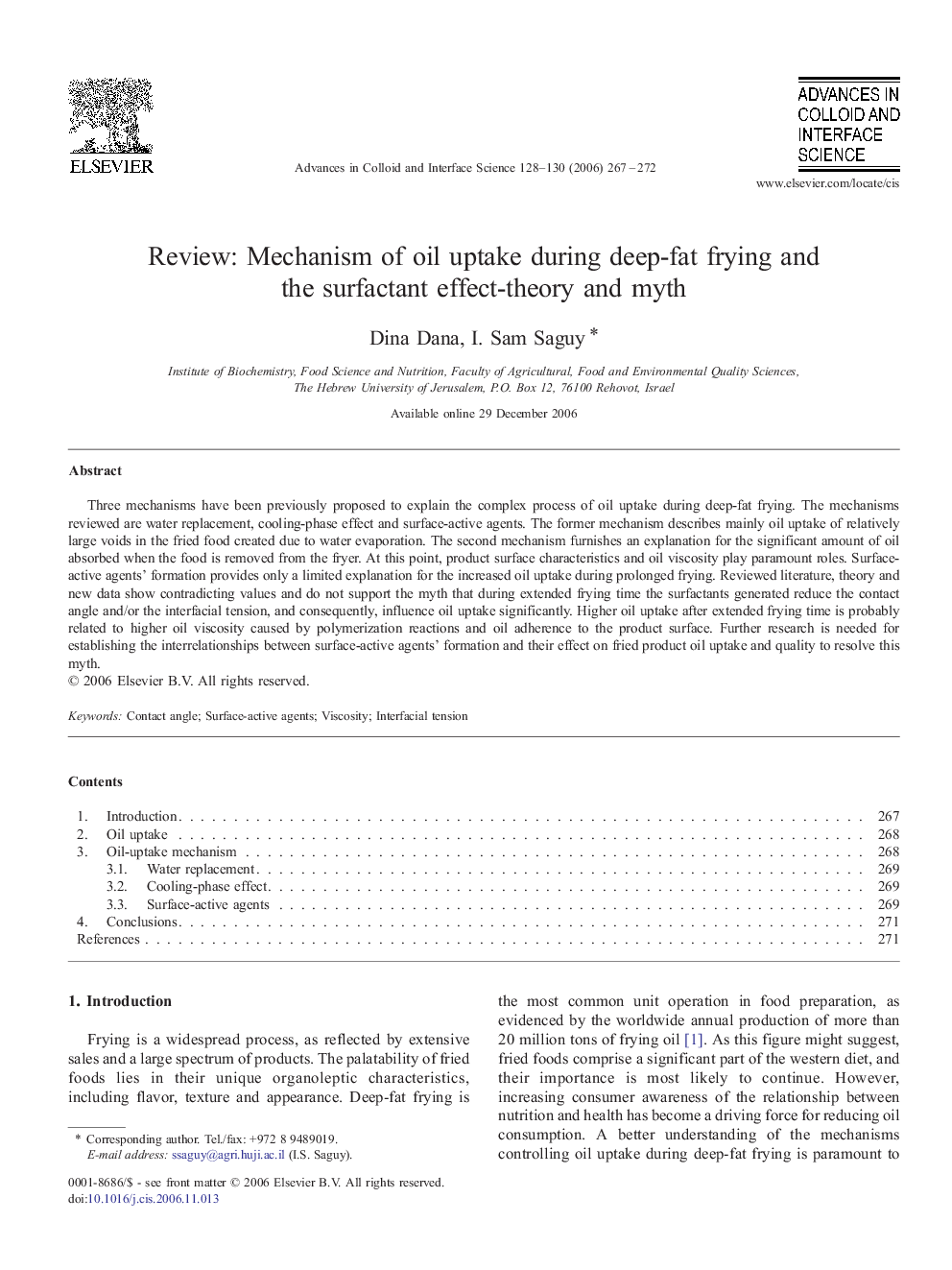| Article ID | Journal | Published Year | Pages | File Type |
|---|---|---|---|---|
| 591271 | Advances in Colloid and Interface Science | 2006 | 6 Pages |
Three mechanisms have been previously proposed to explain the complex process of oil uptake during deep-fat frying. The mechanisms reviewed are water replacement, cooling-phase effect and surface-active agents. The former mechanism describes mainly oil uptake of relatively large voids in the fried food created due to water evaporation. The second mechanism furnishes an explanation for the significant amount of oil absorbed when the food is removed from the fryer. At this point, product surface characteristics and oil viscosity play paramount roles. Surface-active agents’ formation provides only a limited explanation for the increased oil uptake during prolonged frying. Reviewed literature, theory and new data show contradicting values and do not support the myth that during extended frying time the surfactants generated reduce the contact angle and/or the interfacial tension, and consequently, influence oil uptake significantly. Higher oil uptake after extended frying time is probably related to higher oil viscosity caused by polymerization reactions and oil adherence to the product surface. Further research is needed for establishing the interrelationships between surface-active agents’ formation and their effect on fried product oil uptake and quality to resolve this myth.
